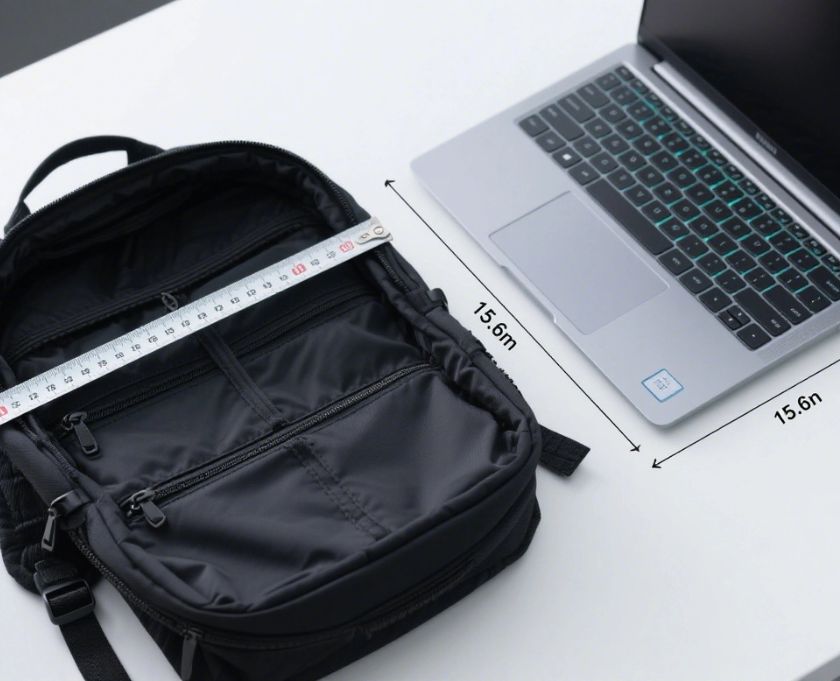Beautiful Plants For Your Interior

You find the perfect backpack. It’s stylish, sturdy, and full of smart compartments. But when your laptop doesn’t fit—too tight, too loose, or totally incompatible—the excitement fades fast.
Laptop compatibility is often overlooked, but it’s one of the most important things to verify before buying a backpack. Here’s how to make sure your device fits safely and snugly, avoiding common mistakes that lead to returns or worse—damaged tech.
1. Know Your Laptop’s Exact Dimensions (Not Just the Screen Size)
Most laptops are advertised by screen size—13″, 15.6″, 17″—but that doesn’t include bezels or body thickness.
✅ What to Measure:
- Width (side to side)
- Depth (front to back)
- Height (thickness)
Tip: Use a tape measure or check your model’s official tech specs online.
2. Compare With the Backpack’s Laptop Compartment Dimensions
Backpacks list a “fits up to X-inch laptop” spec—but that’s vague. Always look for internal compartment measurements, not just the suggested screen size.
Example:
If your 15.6″ laptop is 14.1 x 9.7 x 0.8 inches, ensure the laptop sleeve is at least:
- 14.5″ wide
- 10″ tall
- 1″ deep
3. Check the Shape and Opening Design
A slim laptop may fit, but if the sleeve has a tight corner or a narrow zipper opening, inserting and removing it could be a struggle—risking damage.
Look for:
- Wide-open clamshell openings
- Padded full-length sleeves
- Stretchable linings
4. Consider Your Laptop Accessories
If you always carry a charging brick, mouse, hard drive, or stylus—choose a backpack that has extra compartments, not just a tight laptop slot.
Compact bags may “fit” your laptop but leave no room for other essentials.
5. Account for Laptop Sleeves or Cases
Do you use a padded sleeve or a hard-shell case for extra protection? Add that thickness to your measurements—this affects fit.
Add +0.5 to 1.0 inch to all sides if you’re using additional protection.
6. Look for Padded & Secure Laptop Compartments
Compatibility is about fit—but safety matters too.
Look for:
- Shock-absorbing padding
- Suspended laptop compartments (not touching the bottom)
- Velcro or elastic straps to hold the laptop in place
7. Read Reviews & Ask Questions
User reviews often reveal the truth about sizing claims. Search for your laptop model in customer reviews or ask the seller directly before buying.
Bonus: Backpack Size Chart Example
| Laptop Size | Min Internal Dimensions (inches) | Backpack Label |
|---|---|---|
| 13″ | 13.1 x 9 x 0.8 | Fits 13″ |
| 14″ | 13.7 x 9.4 x 0.9 | Fits 14″ |
| 15.6″ | 14.5 x 10 x 1.0 | Fits 15.6″ |
| 17″ | 16.5 x 11 x 1.1 | Fits 17″ |
Frequently Asked Questions (FAQ)
Q1: Can I use a 15″ backpack for a 15.6″ laptop?
A: Not recommended. 15.6″ laptops are often too tight for standard 15″ slots.
Q2: What if the backpack is too big for my laptop?
A: Your laptop may slide around inside—use a sleeve to add protection.
Q3: Is screen size always a reliable guide?
A: No. Physical dimensions vary by brand—even with the same screen size.
Q4: How do I find my laptop’s dimensions?
A: Check the manufacturer’s product page or measure it manually with a ruler.
Q5: What if I plan to upgrade my laptop soon?
A: Choose a backpack with some room to grow—go one size up if needed.
Conclusion: A Perfect Fit Starts With Smart Checking
Your laptop deserves more than just a random slot. Choosing the right backpack starts with knowing your device inside and out. Measure, compare, and plan ahead—and you’ll avoid the pain of poor fit, returns, or tech mishaps.